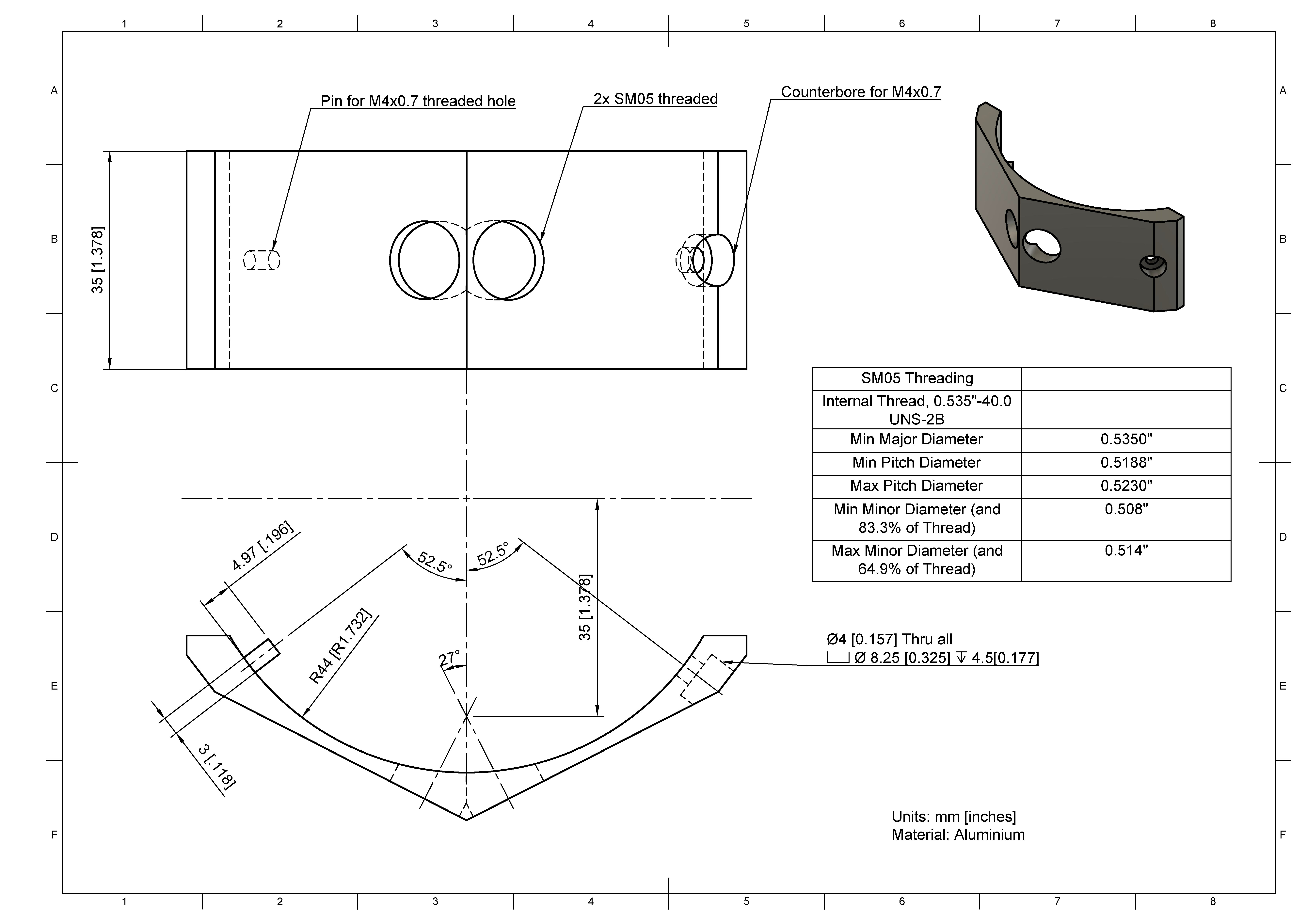Optics tooling and mounts
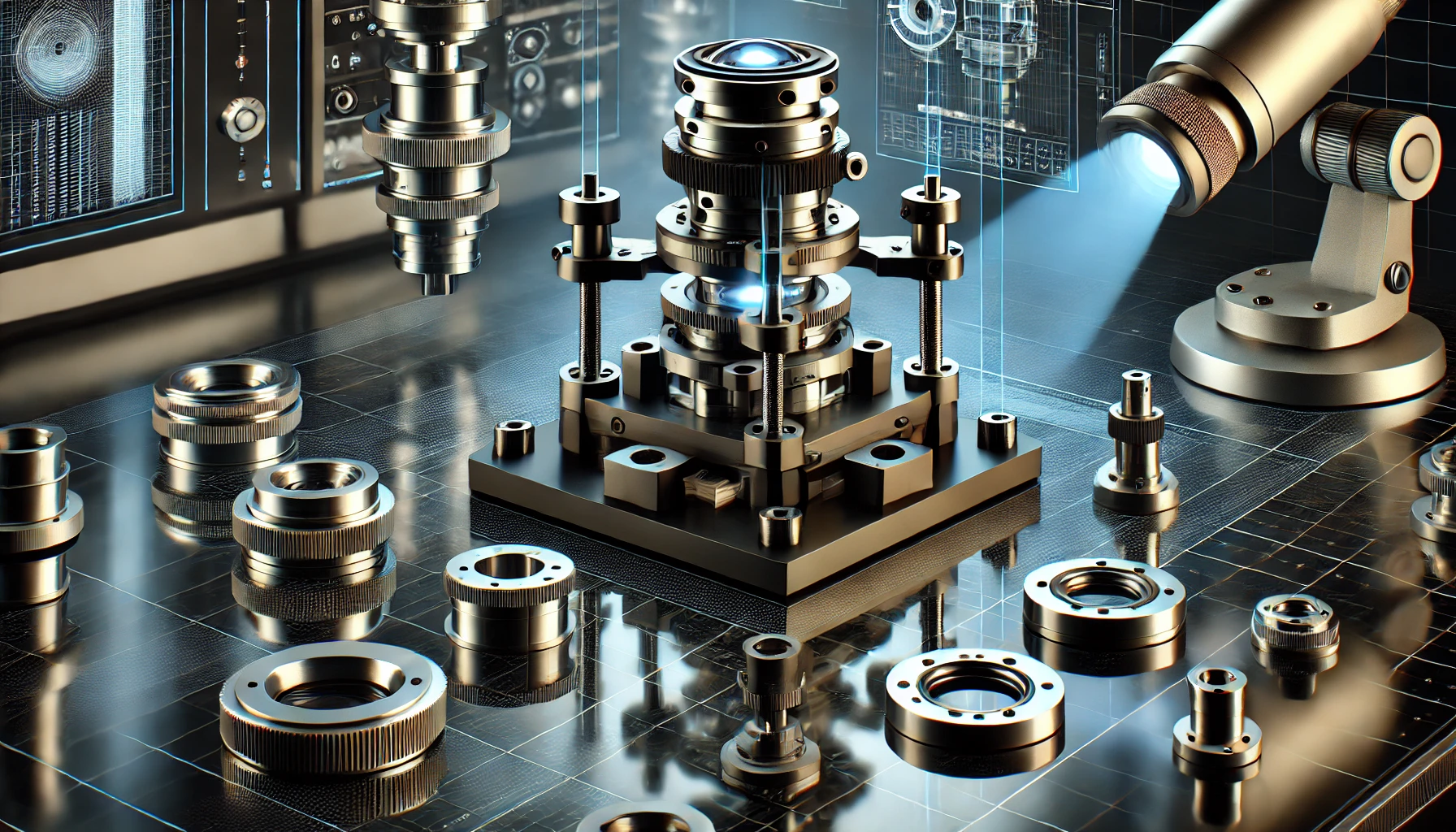
This blog post showcases some optical tooling and mounts I designed in SolidWorks and Fusion.
Water-cooling galvomirror mount
Efficient cooling of a galvomirror is important to maximize both scanning speed and angle. This is a copper galvomirror mount I designed that incorporates water-cooling and is SM1-threaded, allowing easy integration with Thorlabs optical mounts. There is also an M4 tapped hole for set-screws that secure the galvomirror in place after alignment.
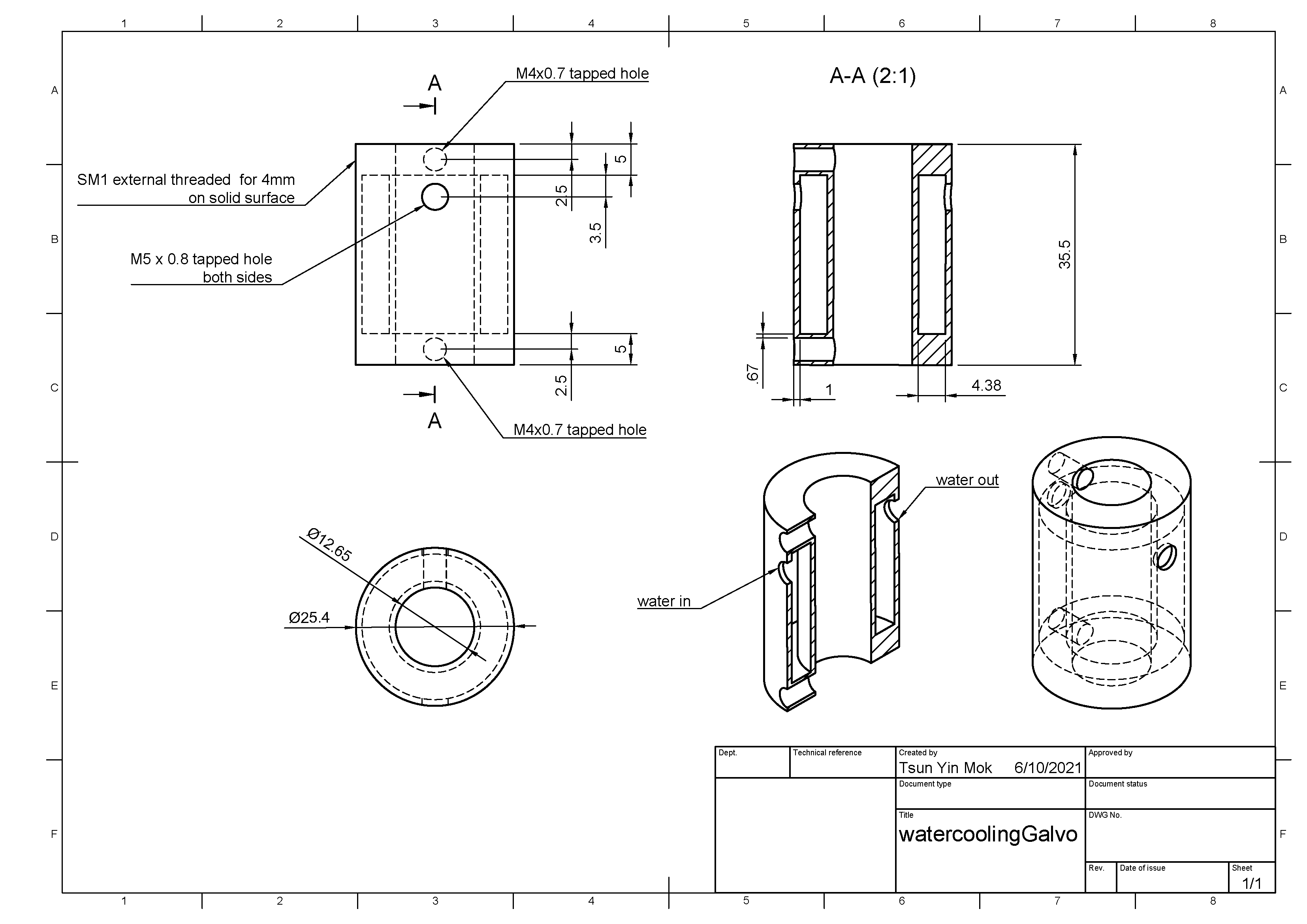
Easy exchange of scanning mirrors
When developing optical systems, there is often a need to swap between different scanning mirrors, such as galvo-galvo mirrors and resonant-galvo mirrors. To simplify this process, I designed a system that allows for easy exchange of scanning mirrors. The system includes:
Galvomirror Mount: This mount places the two galvomirrors close together to achieve virtual conjugation, ensuring that the beam from the first mirror falls within the clear aperture of the second mirror during scanning. The mount can be attached to the mounting plate so that the output beam from the galvo mirrors is aligned with the center (optical axis) of the scan lens.
Mounting Plate: All mounting plates in this system share identical mounting-hole patterns. This design enables a plug-and-play setup that requires minimal realignment when switching between different scanning mirror configurations.
Scan Lens Mount: The scan lens mount is pre-aligned such that its center coincides with the output beam from the galvomirrors, ensuring proper alignment along the optical axis.
Mounting plate for the galvo-galvo mirror:
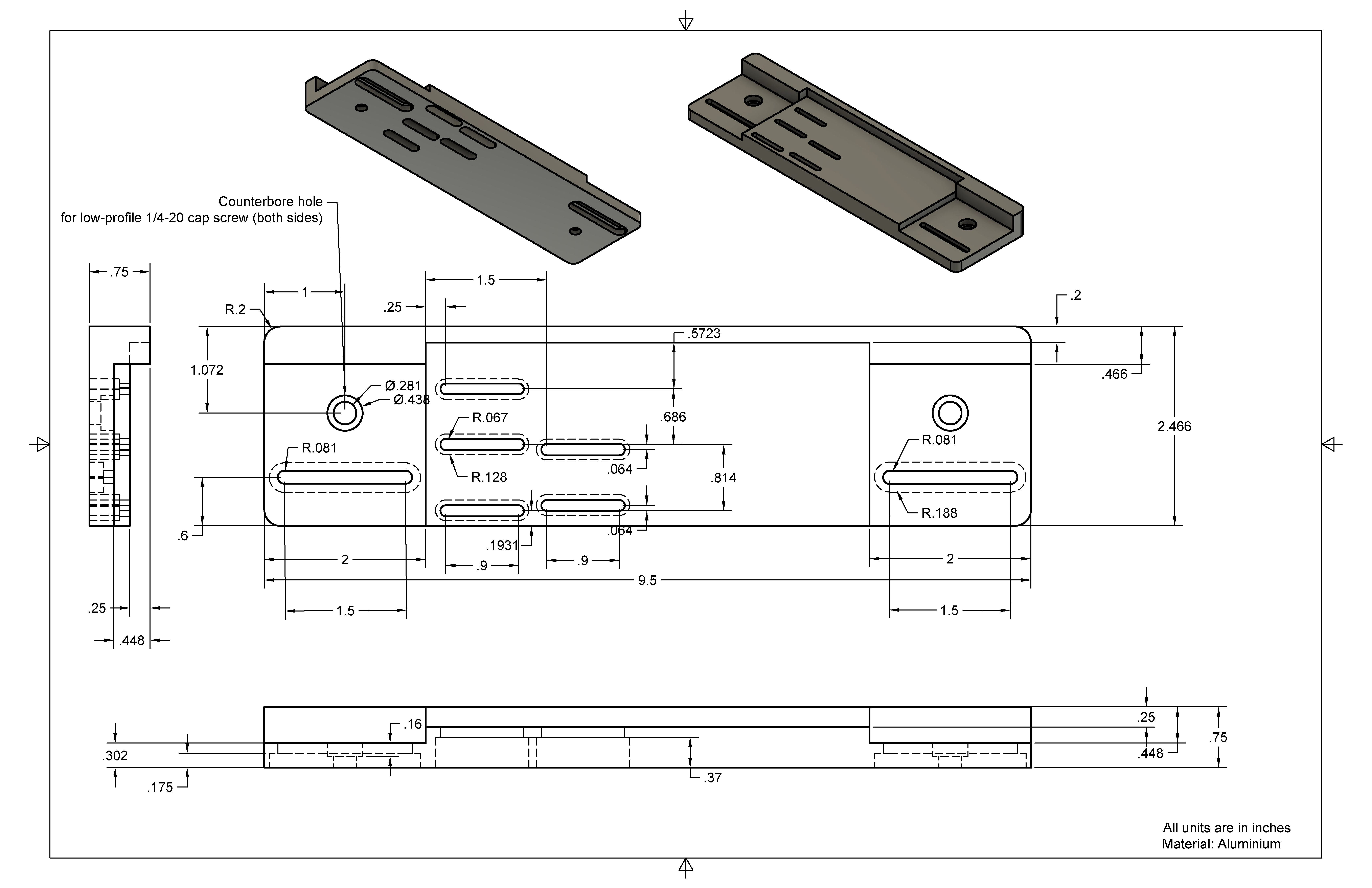
Mounting plate for the resonant-galvo mirror:
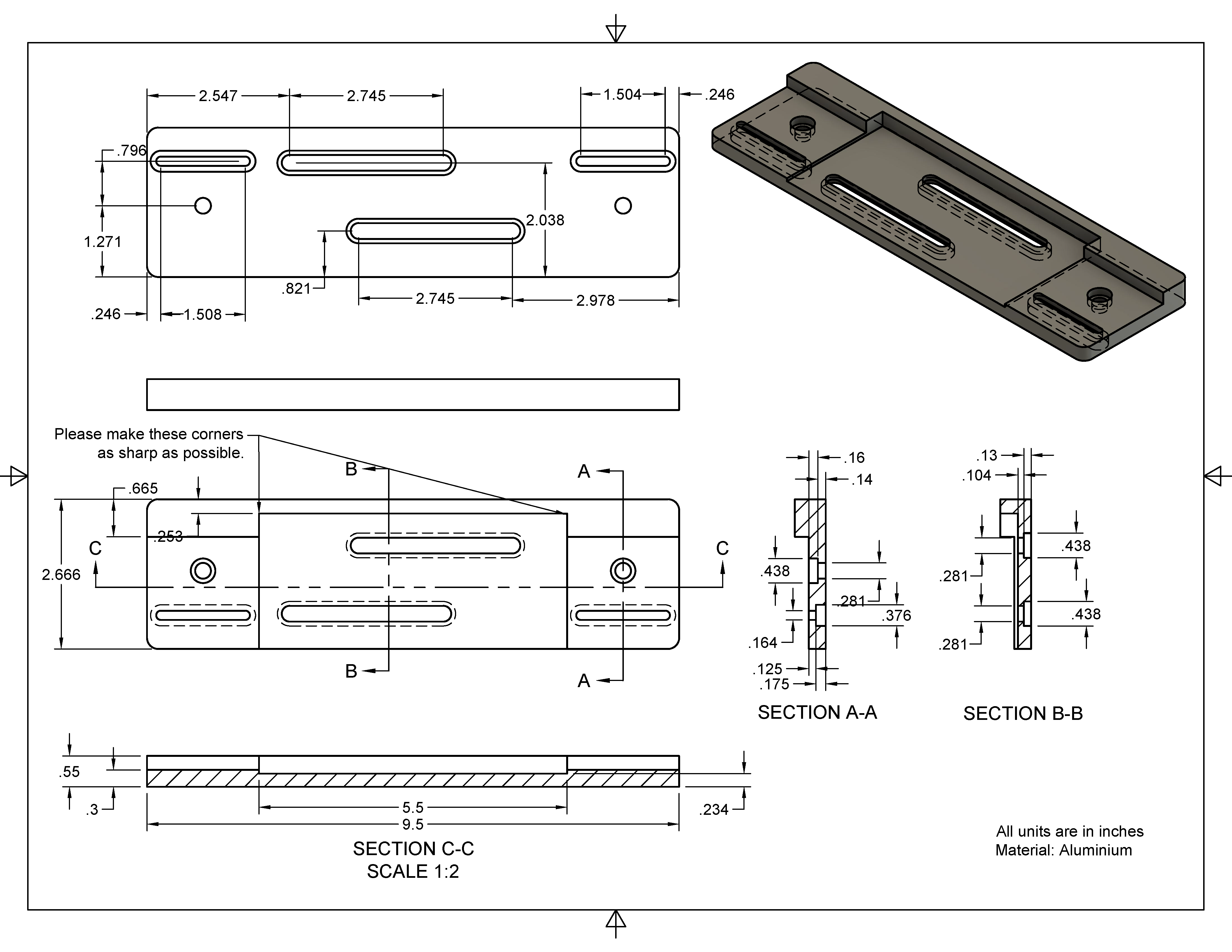
Alignment tooling for polygon mirror
Aligning a polygon mirror can be difficult due to its bulk and the challenge of adding kinematic mounts. Precise alignment is crucial: when the beam is on-axis, the incident beam must strike the center of a facet so that the reflected beam passes through the optical axis of the subsequent scan lens. This specialized tooling attaches to the polygon mirror casing using a pin and a counterbored M4 screw. Two SM05-threaded holes assist with alignment: one for the incident beam and one for the reflected beam, ensuring both are centered and perpendicular to each hole. Each threaded hole can accommodate two apertures separated by 2–3 inches of tubing to facilitate alignment.
